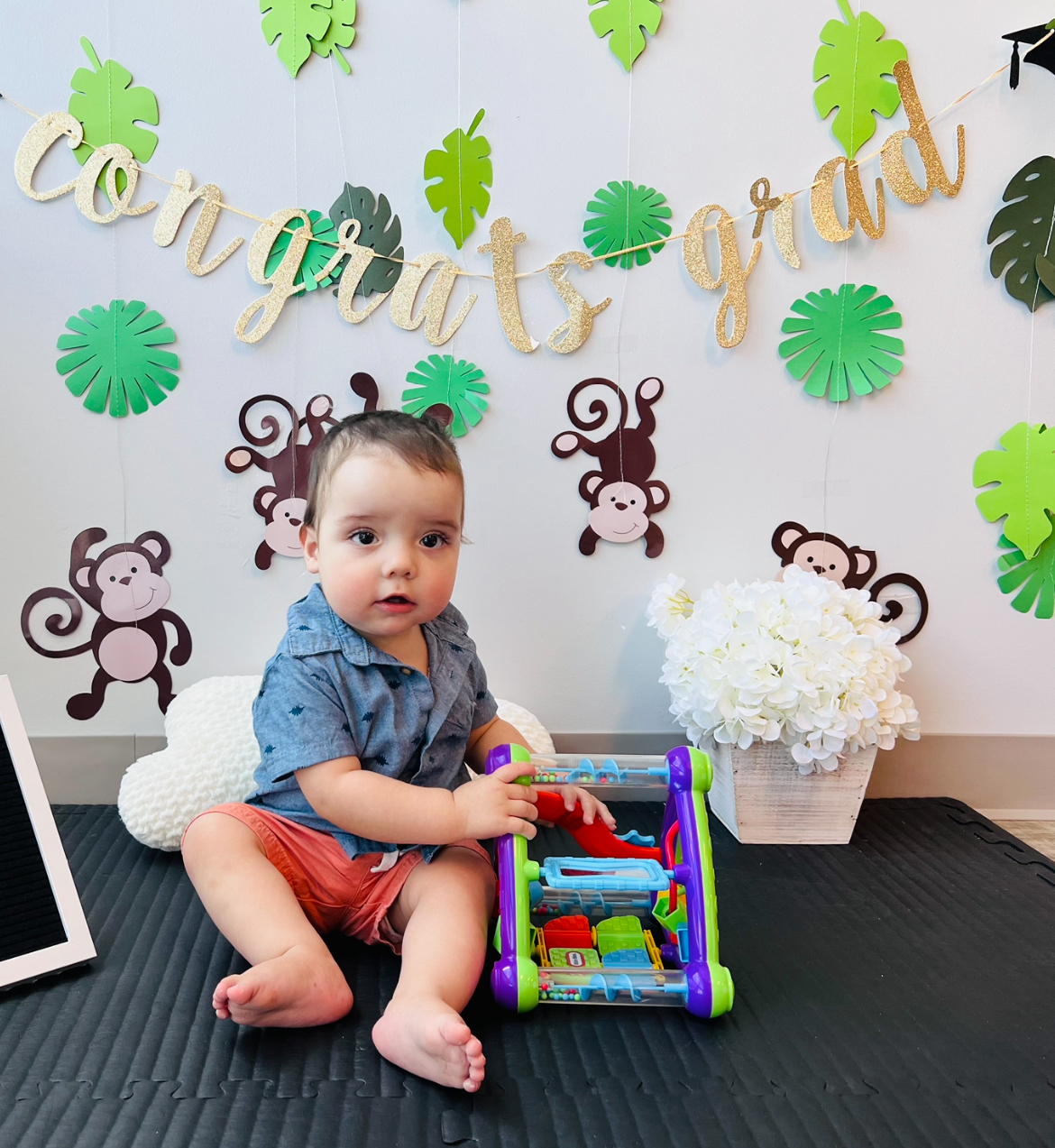Parents’ instincts and early action lead to positive outcome for Houston infant with sagittal craniosynostosis treated by UTHealth Houston

.jpg/975w/jpegp)

When Zelmira and Justin Farmer of Houston welcomed their son, Lucas, on June 20, 2024, they were filled with joy and anticipation for the future. They were excited about adding a little boy to their family, a brother for their daughter, Stella.
Their excitement soon gave way to concern when an unexpected discovery changed the course of their journey.
Lucas was delivered via cesarean section because he was a breech baby, meaning he was lying on his backside in Zelmira’s uterus instead of the usual headfirst position. Because of this, he and Zelmira spent Lucas’ first few days in the hospital. It was during their stay that a physician’s assistant noticed something unusual: a subtle ridge along Lucas’ skull, where the bones felt firmer than they should in a newborn.
Hearing the urgency in the voices of the medical professionals, the Farmers acted quickly to seek a specialist’s opinion.
“We trusted our instincts and those of our health care providers. Soon, everything was set in motion to determine the best course of action for Lucas,” Zelmira said.
Lucas was referred to a specialist in pediatric neurosurgery at UTHealth Houston, who confirmed Lucas’ diagnosis. He had a type of craniosynostosis, a general term for when skull seams close prematurely, called sagittal craniosynostosis, where the seam at the top of the head closes too early, causing a long, narrow head shape. It is a rare condition, occurring in 1 in every 5,000 births.
After seeing the neurosurgery specialist, Lucas’ care was entrusted to Danielle Sobol, MD, an assistant professor with the Division of Plastic and Reconstructive Surgery in the Department of Surgery at McGovern Medical School at UTHealth Houston.
“Usually, the sagittal skull growth plate doesn’t close until young adulthood,” Sobol said. “If untreated, craniosynostosis can result in increased pressure on the brain and potentially contribute to neurodevelopmental concerns.”
Because his parents acted quickly, Lucas was a prime candidate for a minimally invasive surgery to correct his sagittal craniosynostosis.
On Oct. 3, 2024, at just three months old, Lucas underwent a one-hour procedure, where Sobol made small incisions to remove the fused portion of the bone at the top and back of his skull. Doing so would allow Lucas’ brain to grow and his skull to develop appropriately.
Following the surgery, Lucas began wearing a custom helmet designed to guide the shape of his skull as it healed.
“At first, it took him a little while to get used to it, but overall, he tolerated it well,” Zelmira said. “He had to wear it for about 23 hours a day for nine months, with breaks just for bath time.”
Lucas’ care team continued to monitor his progress closely, seeing him every few months and guiding Zelmira and Justin through each stage.
Today, at just over 1 year old, Lucas is thriving, and his outcome, according to Sobol, is fantastic.
“Lucas is doing great and would pass what we would refer to as the ‘playground test’ — meaning no one would know that he had surgery on his skull,” Sobol said.
Zelmira said that Lucas’ skull is growing as expected, and his milestones are right on track.
“He’s a happy, energetic, and sweet little boy who adores his big sister and tries to imitate everything she does. He’s even a bit more daring than she was at his age,” she said.
Lucas’ journey isn’t quite over — he will continue to have annual check-ups until he turns 5 years old. He is also part of a neurocognitive development study aimed at helping researchers at UTHealth Houston better understand the long-term outcomes for children with craniosynostosis.
“We feel incredibly fortunate that Lucas’ condition was caught early,” Zelmira said. “We appreciate Dr. Sobol for ensuring Lucas has every chance to live a normal and healthy life.”
Sobol’s biggest advice to other parents is simple: Trust your instincts.
“If something feels off, don’t hesitate — act. Asking questions and seeking help early gave Lucas the best possible start,” she said.
Media Inquiries: 713-500-3030